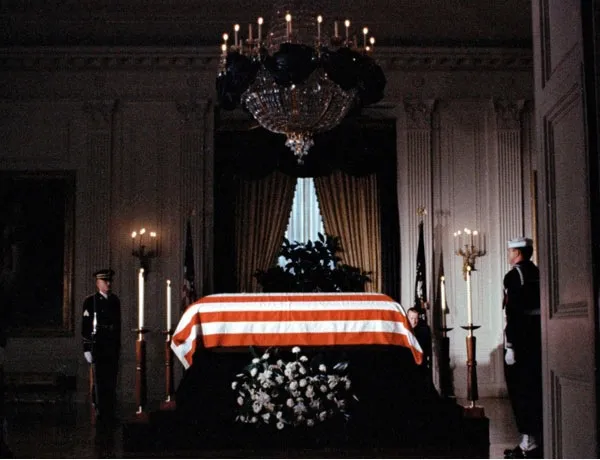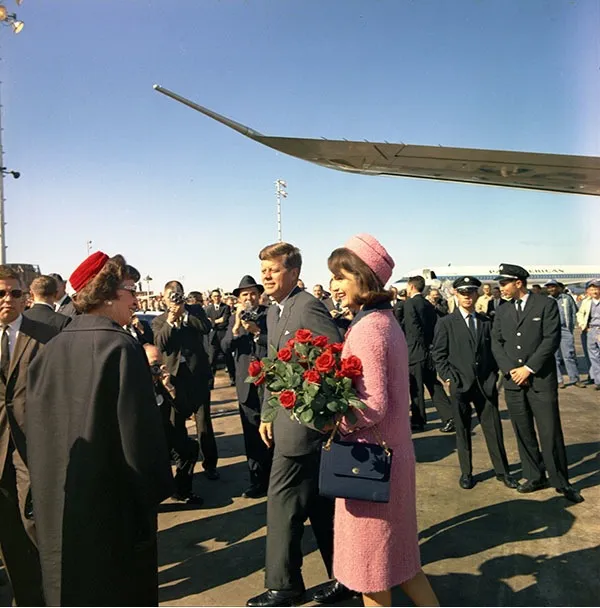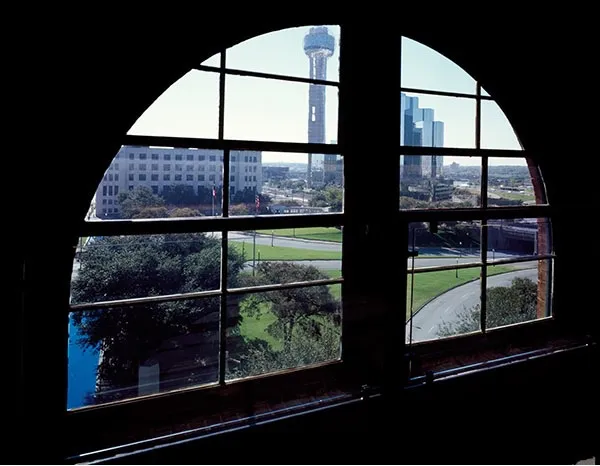![]()
The Death of a President
On a fall day in Texas, the Kennedy presidency came to an end and a thousand conspiracies were born.
by John McAdams
Dallas, Nov. 22, 1963
President John F. Kennedy arrived in Texas on Nov. 21, 1963, to begin a multiple-city tour designed to buttress his support in the forthcoming 1964 presidential election and to calm a feud between the liberal and conservative wings of the Texas Democratic Party.
On the following day, Kennedy rode through Dallas in a motorcade. As his limousine moved through Dealey Plaza in downtown Dallas, he was hit by bullets from a sniper’s rifle, one of them inflicting a massive head wound. Although he was rushed to Parkland Hospital, the doctors there had no chance of saving him and pronounced him dead at 1 p.m.
As the manhunt for the shooter began, word came that a Dallas police officer, J.D. Tippit, had been shot in the Oak Cliff section of Dallas. A man acting suspiciously was seen sneaking into the Texas Theatre in Oak Cliff. Police converged on the theater and arrested one Lee Harvey Oswald as a suspect in the Tippit shooting.
President Kennedy and First Lady Jacqueline Kennedy on their arrival at Dallas airport Love Field on Nov. 22, 1963.
When Oswald was taken to Dallas police headquarters, police discovered that he was an employee of the Texas School Book Depository — from which several witnesses said shots were fired at the president — and had gone missing in the immediate aftermath of the shooting.
In the hours and days following the event, evidence seemed to decisively link Oswald to both the Kennedy and the Tippit shootings. An intact bullet found on a stretcher at Parkland hospital, and two fragments found in the presidential limo matched a rifle owned by Oswald, and three spent cartridges located in the sniper’s nest in the book depository matched his rifle. Four spent cartridges at the scene of the Tippit shooting matched a revolver that Oswald was carrying when he was arrested.
If Oswald shot Kennedy, his motives remain obscure. One possibility is that, as a supporter of Fidel Castro’s Cuban revolution, Oswald (unlike the vast majority of Americans at the time) was aware of U.S. government plots against Castro’s life. Also, Oswald seemed to believe he deserved to be an historically relevant person, despite having failed in numerous schemes to achieve importance. Perhaps shooting Kennedy was his last, desperate (and successful) attempt at significance.
Oswald denied his guilt. He was silenced forever on Sunday, Nov. 24, by Dallas strip club owner Jack Ruby, who snuck into the basement of the Dallas police headquarters as Oswald was being transferred and fatally shot him.
In the days following Oswald’s death, President Lyndon Johnson set up a blue-ribbon commission to investigate the assassination and to quell rumors of conspiracy. Eventually, this became known as the Warren Commission, after its head, Supreme Court Chief Justice Earl Warren. After several months of frantic work, the commission announced its conclusion: Oswald had shot Kennedy, and there was no evidence of any conspiracy.
Rather than putting the issue to rest, the Warren Commission’s report kickstarted five decades of doubt and distrust and an ever-proliferating array of conspiracy theories.
Jack Ruby
Lee Harvey Oswald remains a cipher largely because of Jack Ruby. Had Oswald lived, conspiracy theories may have withered on the vine with a single confession. Instead, in the two days that Oswald was incarcerated, he insisted on his innocence.
Ruby was born Jacob Rubenstein in Chicago, the fifth of eight children. As a child, he spent time in foster homes and was arrested for truancy. After World War II, he moved to Dallas and embarked on a career as a manager of strip clubs, night clubs and pool halls. Ruby didn’t use banks; instead, he carried a wad of cash. To protect the money, he carried a gun.
It’s difficult to determine Ruby’s ties to the Dallas underworld. He knew gangsters, but whether Ruby was close to them is debated.
Why did Ruby kill Oswald? His stated reason was a desire to save Jackie Kennedy from having to return to Dallas to testify. In March 1964, Ruby was convicted of “murder with malice” of Oswald and sentenced to death. In 1966, however, the Texas Court of Appeals reversed the decision. While awaiting a new trial, Ruby died of lung cancer. At the time of his death in 1967, Ruby — like many Americans — believed there was a conspiracy to kill Kennedy, although he always denied being part of it.
A Universe of Conspirators
Within two hours of the assassination of John F. Kennedy on Nov. 22, 1963, Lee Harvey Oswald became the prime suspect. Evidence quickly accumulated that Oswald, a self-proclaimed Marxist, was guilty of killing the president. The Warren Commission report, issued in September of the following year, endorsed this conclusion.
Conspiracy theories sprouted in great number almost from day one. Oswald’s travels and murky background, Jack Ruby’s murder of Oswald, Ruby’s own unclear past, and conflicting witness accounts all contributed. As historian William Manchester noted, “If you put the murdered president of the United States on one side of a scale and that wretched waif Oswald on the other side, it doesn’t balance. You want to add something weightier to Oswald. … A conspiracy would, of course, do the job nicely.”
Conspiracy theories come in all flavors — some close to bizarre and some that raise serious questions. Some conspiracists, for example, view Oswald as a zombie assassin, a Manchurian Candidate-type of killer programmed by conspirators with drugs and hypnosis to murder Kennedy. Much more mainstream is the theory that a shooter from Kennedy’s right front (the famous grassy knoll) shot at the president. Because multiple witnesses saw a shooter behind Kennedy in the Texas School Book Depository, this would imply two shooters and a conspiracy.
Various groups have been fingered as conspirators; and conspiracies require that groups are working in tandem with one another. Generally, the conspirators are chosen from among the following entities.
The view from the sixth floor at the Texas School Book Depository. Lee Harvey Oswald had moved boxes to create a sort of bunker inside the building. He also used boxes to make a gun rest.
The CIA
If any organization would have the ability to mount the elaborate covert operation necessary to kill Kennedy, frame Oswald and then cover its tracks, it should be the Central Intelligence Agency. Of course, the CIA’s inept and often downright comical attempts to depose or assassinate Fidel Castro suggest we ought not blandly assume it could pull off such an enterprise.
It is true that Kennedy was irate about the bad intelligence from the CIA that led him to proceed with the Bay of Pigs invasion, and he vowed “to splinter the CIA into a thousand pieces and scatter it to the winds....



